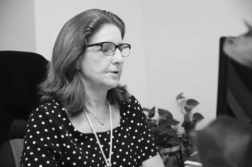ORLANDO, Fla. (Ivanhoe Newswire) — One person dies from melanoma every hour. And despite the fact that one in five Americans will develop skin cancer, some important risk factors and preventive measures are overlooked.
Sancy Leachman, MD, PhD, Chair of the Department of Dermatology at OHSU School of Medicine said, “We know that melanoma’s incidence is increasing really dramatically.”
The summer sun is one culprit. A study published in cancer epidemiology found that teenage sunburns greatly increased the risk for melanoma.
Dr. Leachman stated, “I can’t tell you how many young women I’ve had with melanoma. Or more than one melanoma.”
If your teen likes tanning, it’s time to have a talk. But does that mean you’re safe during the winter? The answer is no! People who participate in winter sports are at increased risk for overexposure to the sun’s ultraviolet radiation also. UV radiation exposure increases up to five percent with every 1,000 feet above sea level, and snow can reflect 80 percent of UV light from the sun. Apply sunscreen to all exposed skin, even on cloudy days. The American cancer society uses the catchphrase: “slip … slop … slap … and wrap!” As a reminder for the ways to prevent skin cancer. And grab a cup of coffee! A ten year study in the journal of the national cancer institute found that drinking coffee is associated with a reduced risk for skin cancer.
The most common sign of melanoma is a changing mole, but there are less common symptoms to look out for, such as sores in the mouth or nose, dark streaks under the nails, moles on the scalp, bleeding bumps or sores, or a dark spot on the iris and other vision changes.
Contributors to this news report include: Hayley Hudson, Producer; Roque Correa, Videographer and Editor.
To receive a free weekly e-mail on Medical Breakthroughs from Ivanhoe, sign up at: http://www.ivanhoe.com/ftk



